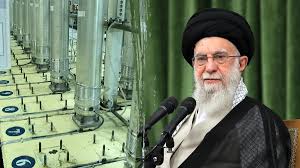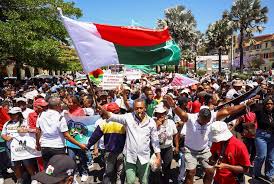A brutal armed assault on a courthouse in the southeastern Iranian city of Zahedan has left at least five people dead, including a mother and her child, and 13 others injured, according to Iranian state media.
The attackers believed to be members of a militant Baloch group threw a hand grenade into the building before opening fire inside. The violence unfolded in Sistan-Baluchestan province, a region long plagued by unrest and demands for autonomy from Iran’s Sunni Baloch minority.
The armed group Jaish al-Adl (Arabic for “Army of Justice”), claimed responsibility for the assault in a statement posted on its Telegram channel. The group, which operates from Pakistan but is also active in Iran, called on civilians to evacuate the area due to ongoing clashes.
According to Iranian media, three of the attackers were killed by Iranian security forces during the incident.
Iranian authorities say the attackers entered the courthouse disguised as visitors. Once inside, they detonated a grenade and headed straight for the judges’ chambers, where several judiciary staff members and security guards were either killed or seriously wounded.
“We have lost innocent lives, including a child. This is a clear act of terror,” said Alireza Daliri, deputy police commander of Sistan-Baluchestan.
Emergency medical teams quickly arrived at the scene and transported the wounded to local hospitals. The area was cordoned off as security forces swept the site.
Sistan-Baluchestan, bordering Pakistan and Afghanistan, is one of Iran’s poorest and most volatile regions. It is home to the Sunni Muslim Baloch community, who have long complained of economic neglect, ethnic discrimination, and political exclusion by the Shiite-led government in Tehran.
Fighting in the region is common. In addition to political tensions, the area is a known hotbed for drug smuggling and militant activity. The Iranian government accuses groups like Jaish al-Adl of collaborating with foreign intelligence services and fueling instability through cross-border attacks.
This attack follows a string of deadly confrontations in the region. In October 2024, ten Iranian police officers were killed in what was also described as a “terrorist” attack by Iranian authorities.
The province remains under tight surveillance by the Islamic Revolutionary Guard Corps (IRGC), which regularly engages in armed clashes with militant groups and criminal networks operating in the area.
Groups like HAALVSH, a Baloch human rights organization, say the people of Sistan-Baluchestan are caught in the middle of a violent tug-of-war. Many civilians fear both the armed groups and the heavy-handed tactics of Iranian security forces.
“The people here are not just facing bullets. They’re facing poverty, silence, and invisibility,” said a regional activist who asked not to be named.
Human rights groups have called for independent investigations into both militant attacks and alleged state abuses, including reports of arbitrary arrests, extrajudicial killings, and discrimination against the Baloch population.
The Zahedan courthouse attack is not just another headline. It’s a reminder of Iran’s deep internal divides, particularly in border regions where ethnic and religious minorities continue to feel excluded.
While the Iranian government promises to bring the perpetrators to justice, questions remain, why does Sistan-Baluchestan remain one of the least developed provinces in Iran? What drives young men to take up arms? And what can be done to end the cycle of violence and alienation?
The attack in Zahedan may be over, but the fear remains. Until the root causes—poverty, exclusion, and repression—are addressed, the region will likely continue to see violence.
“We don’t just want security. We want dignity, opportunity, and peace.” As one local said,



